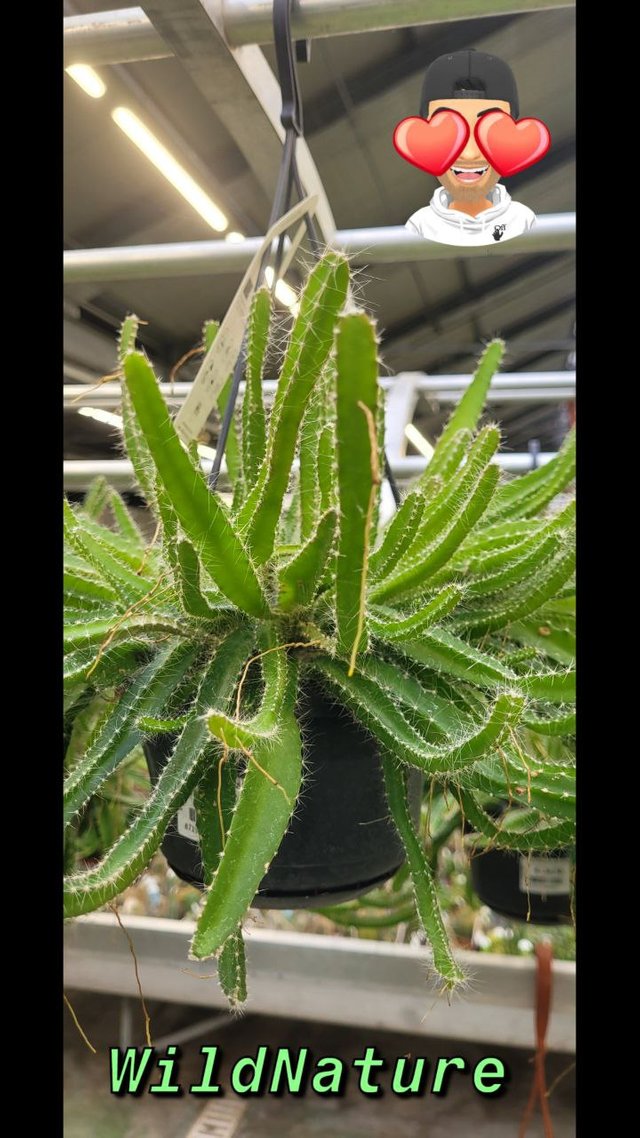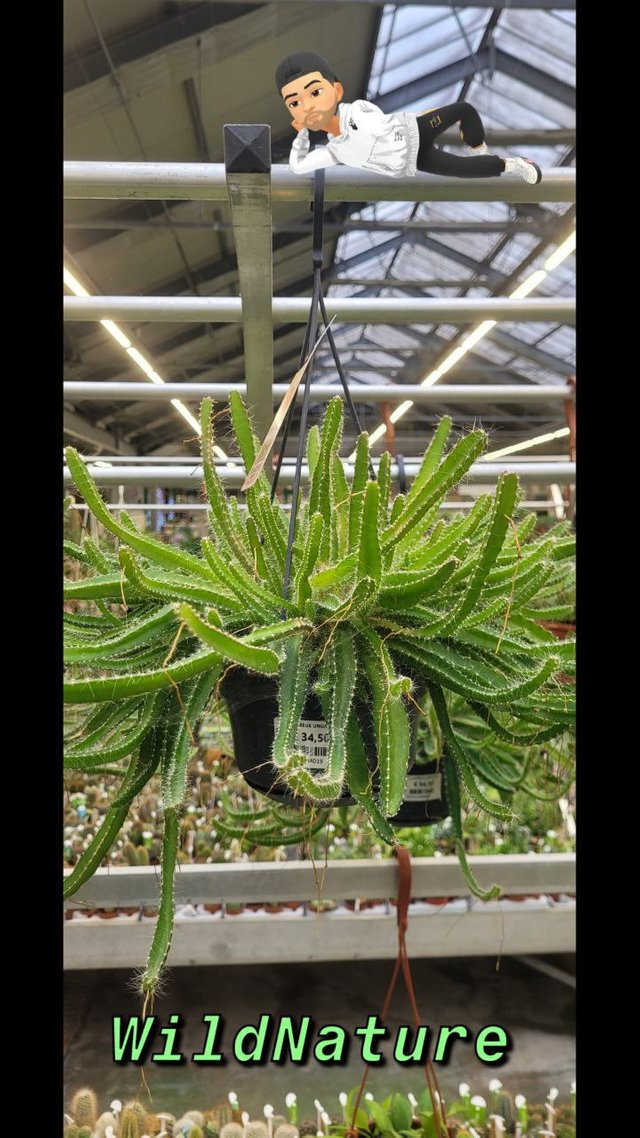Cactus Frutto del drago 🌵💚
The English version follows in the end.
Versione Italiana 🇮🇹🇮🇹🇮🇹

Il cactus frutto del drago, scientificamente noto come Hylocereus è una pianta appartenente alla famiglia delle Cactaceae. Originario delle regioni tropicali e subtropicali dell'America Centrale e del Sud, si è diffuso in tutto il mondo, particolarmente in Asia, per la produzione del suo frutto esotico, conosciuto come "pitaya" o "dragon fruit".
Questo cactus ha un portamento rampicante o ricadente, con lunghi fusti succulenti di colore verde acceso. I fusti, suddivisi in segmenti, presentano tre coste dentellate e piccole areole spinose. Essendo una pianta epifita, può crescere su supporti naturali o artificiali, sviluppando radici aeree che le permettono di ancorarsi e arrampicarsi. Durante la stagione della fioritura, produce grandi fiori bianchi o gialli a forma di tromba, estremamente profumati, che si aprono solo di notte, attirando impollinatori come pipistrelli e falene.

Il frutto, la pitaya, è uno degli aspetti più affascinanti di questa pianta. Di forma ovale, è ricoperto da una buccia cerosa e colorata, spesso rosa intenso o giallo, con caratteristiche "scaglie" verdi o rosse. All'interno, la polpa può essere bianca, rossa o viola, puntinata da piccoli semi neri commestibili. Il sapore del frutto è dolce e delicato, con note che ricordano il kiwi e la pera.
Dal punto di vista della coltivazione, il cactus frutto del drago è una pianta robusta e poco esigente. Predilige posizioni soleggiate o con luce indiretta molto intensa e climi caldi e secchi. Necessita di un terreno ben drenato, sabbioso o roccioso, arricchito con materia organica. Le irrigazioni devono essere moderate, lasciando asciugare completamente il substrato tra un’annaffiatura e l’altra. È resistente alla siccità ma soffre i ristagni idrici. Nei climi freddi, la pianta deve essere protetta dal gelo, preferibilmente coltivata in vaso per essere riparata in inverno.
E voi, avete mai coltivato il cactus frutto del drago? Avete già assaggiato il suo frutto? Fatemi sapere nei commenti cosa ne pensate e lasciate un "like" se apprezzate questa pianta tanto spettacolare quanto utile! 👍🌵🍈💚
(Foto scattate da me) 📸
English version 🇬🇧🇬🇧🇬🇧

The dragon fruit cactus, scientifically known as Hylocereus, is a plant belonging to the Cactaceae family. Native to the tropical and subtropical regions of Central and South America, it has spread worldwide, particularly in Asia, for the production of its exotic fruit, known as "pitaya" or "dragon fruit."
This cactus has a climbing or trailing growth habit, with long, succulent stems of bright green color. The stems, divided into segments, feature three ridged edges and small spiny areoles. Being an epiphytic plant, it can grow on natural or artificial supports, developing aerial roots that allow it to anchor and climb. During the flowering season, it produces large, trumpet-shaped flowers in white or yellow that are highly fragrant and bloom only at night, attracting pollinators such as bats and moths.

The fruit, the pitaya, is one of the most fascinating features of this plant. Oval-shaped, it is covered by a waxy, colorful skin, often deep pink or yellow, with characteristic green or red "scales." Inside, the flesh can be white, red, or purple, dotted with small edible black seeds. The flavor of the fruit is sweet and delicate, with notes reminiscent of kiwi and pear.
From a cultivation perspective, the dragon fruit cactus is a hardy and low-maintenance plant. It thrives in sunny locations or areas with very bright indirect light and prefers warm, dry climates. It requires well-draining soil, sandy or rocky, enriched with organic matter. Watering should be moderate, allowing the soil to dry out completely between waterings. While it is drought-tolerant, it does not tolerate waterlogging. In colder climates, the plant must be protected from frost, preferably grown in a pot so it can be moved indoors during winter.
Have you ever grown a dragon fruit cactus? Have you already tasted its fruit? Let me know in the comments what you think and leave a "like" if you appreciate this spectacular yet useful plant! 👍🌵🍈💚
(Photos taken by me) 📸
